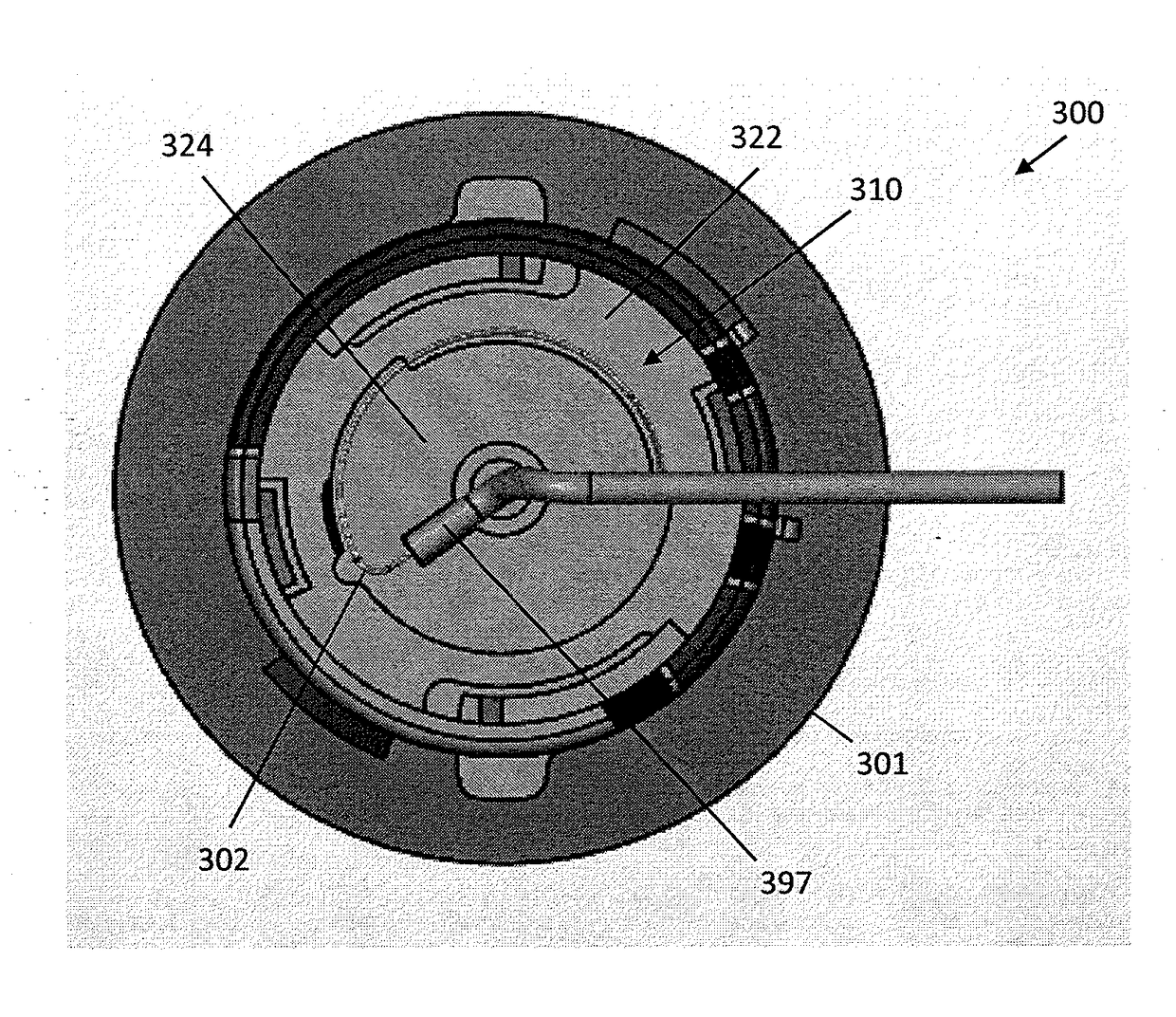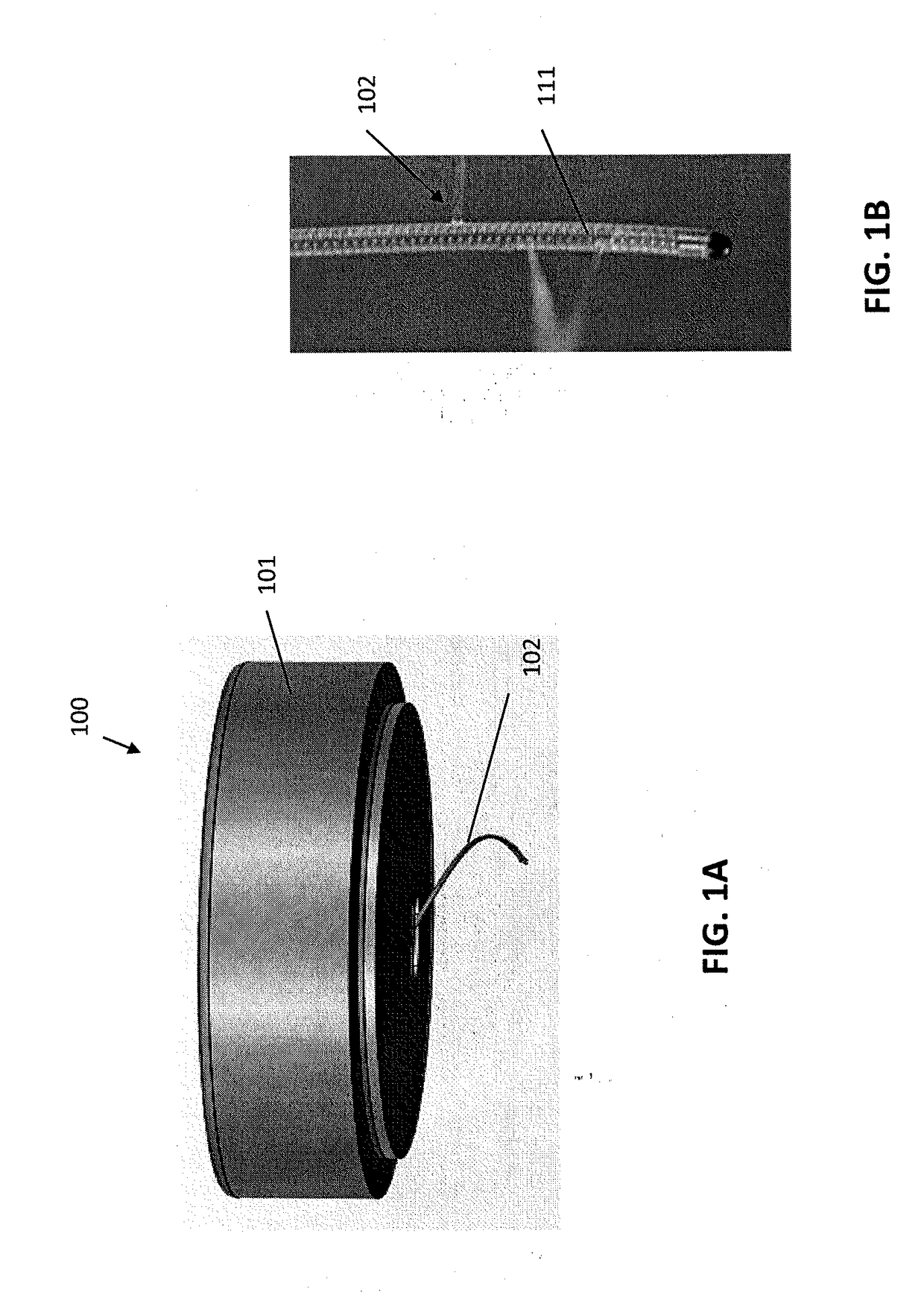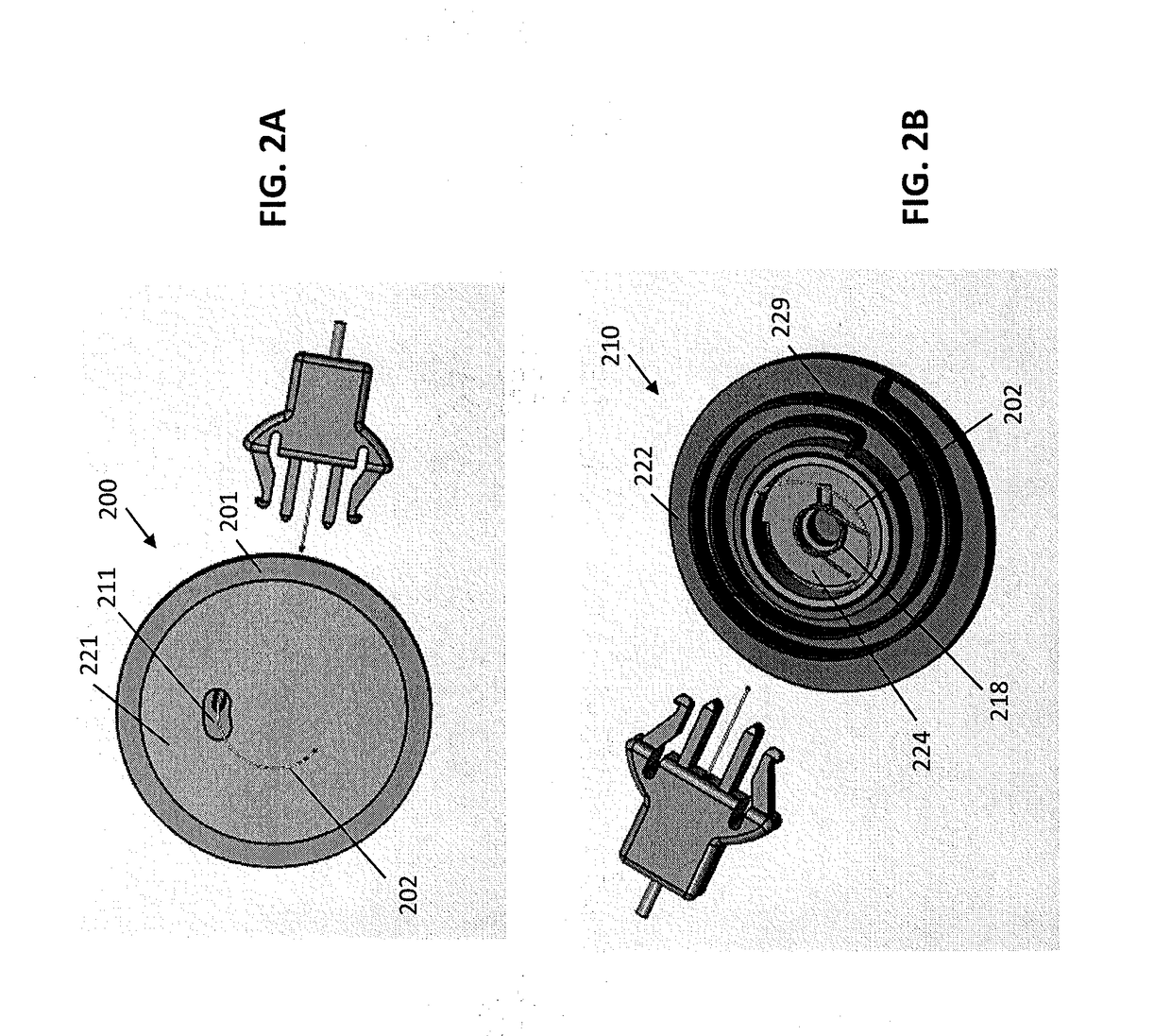Helical insertion infusion device
a technology of infusion device and helical insertion, which is applied in the direction of intravenous device, infusion needle, guide needle, etc., can solve the problems of limiting the therapy to simplistic flow rate and profile, compromising the patient's mobility and lifestyle, and severely limited control of drug administration, so as to reduce the insertion force
- Summary
- Abstract
- Description
- Claims
- Application Information
AI Technical Summary
Benefits of technology
Problems solved by technology
Method used
Image
Examples
Embodiment Construction
[0066]Described herein are subcutaneous infusion devices that promote wearability, increase wear-life, and effectively deliver fluid transcutaneously. The in-dwelling infusion devices may include a multi-orifice soft cannula and a user-depth controlled curved insertion cannula that provides for a spiral or helical insertion path through the tissue.
[0067]As shown in FIGS. 1A and 1B, an exemplary infusion device 100 includes a housing assembly 101, a hollow curved cannula 102, and a driver to which the hollow curved cannula 102 is attached. The driver rotates the hollow curved cannula 102 and simultaneously translates the hollow curved cannula 102 into the soft tissue. The device 100 is configured to insert the curved cannula 102 spirally or helically into soft tissue, thereby better fixing the cannula 102 in the soft tissue. In some embodiments, the infusion device 100 can be configured to interface with an infusion pump.
[0068]In some embodiments, the hollow curved cannula 102 can be...
PUM
 Login to View More
Login to View More Abstract
Description
Claims
Application Information
 Login to View More
Login to View More - R&D
- Intellectual Property
- Life Sciences
- Materials
- Tech Scout
- Unparalleled Data Quality
- Higher Quality Content
- 60% Fewer Hallucinations
Browse by: Latest US Patents, China's latest patents, Technical Efficacy Thesaurus, Application Domain, Technology Topic, Popular Technical Reports.
© 2025 PatSnap. All rights reserved.Legal|Privacy policy|Modern Slavery Act Transparency Statement|Sitemap|About US| Contact US: help@patsnap.com



